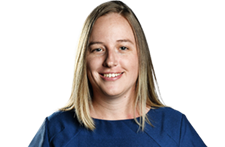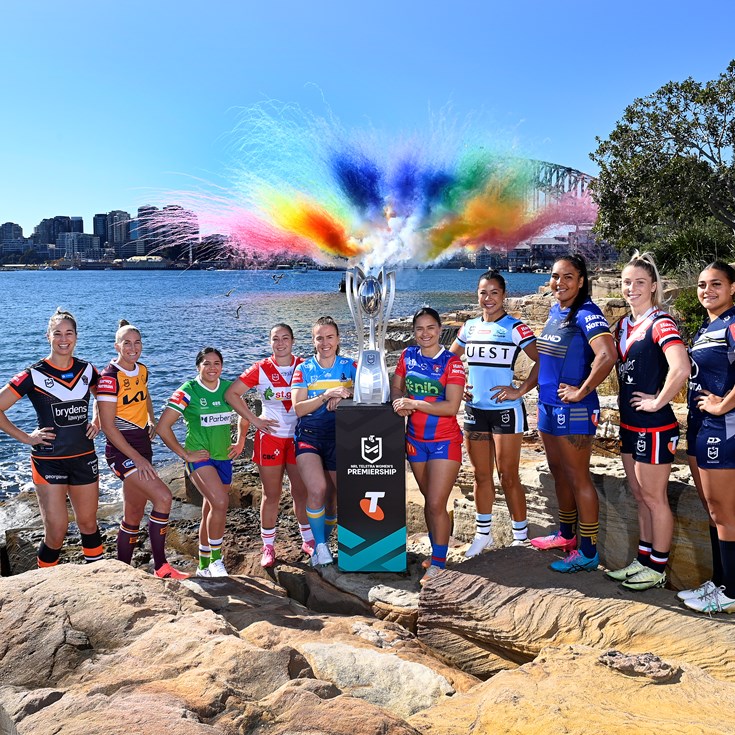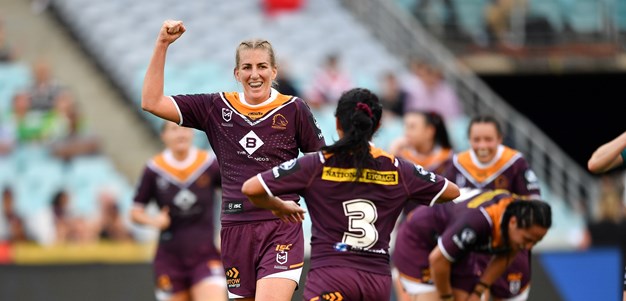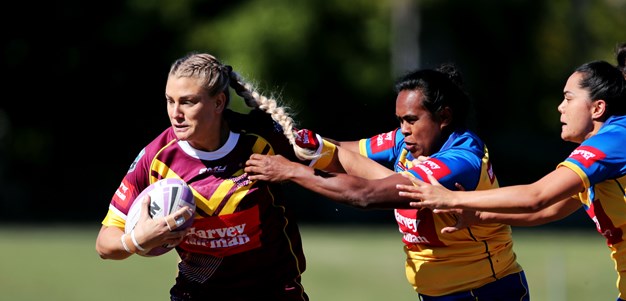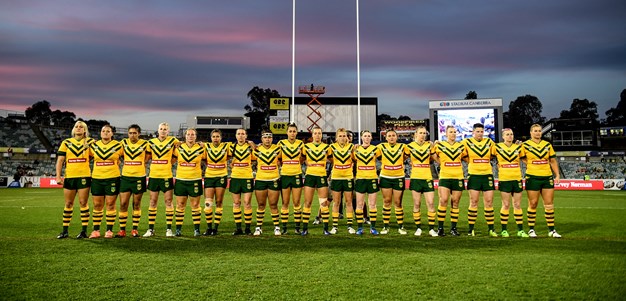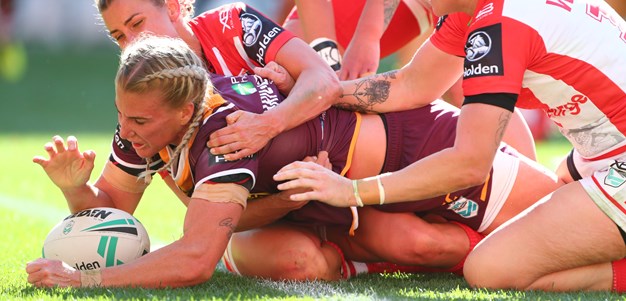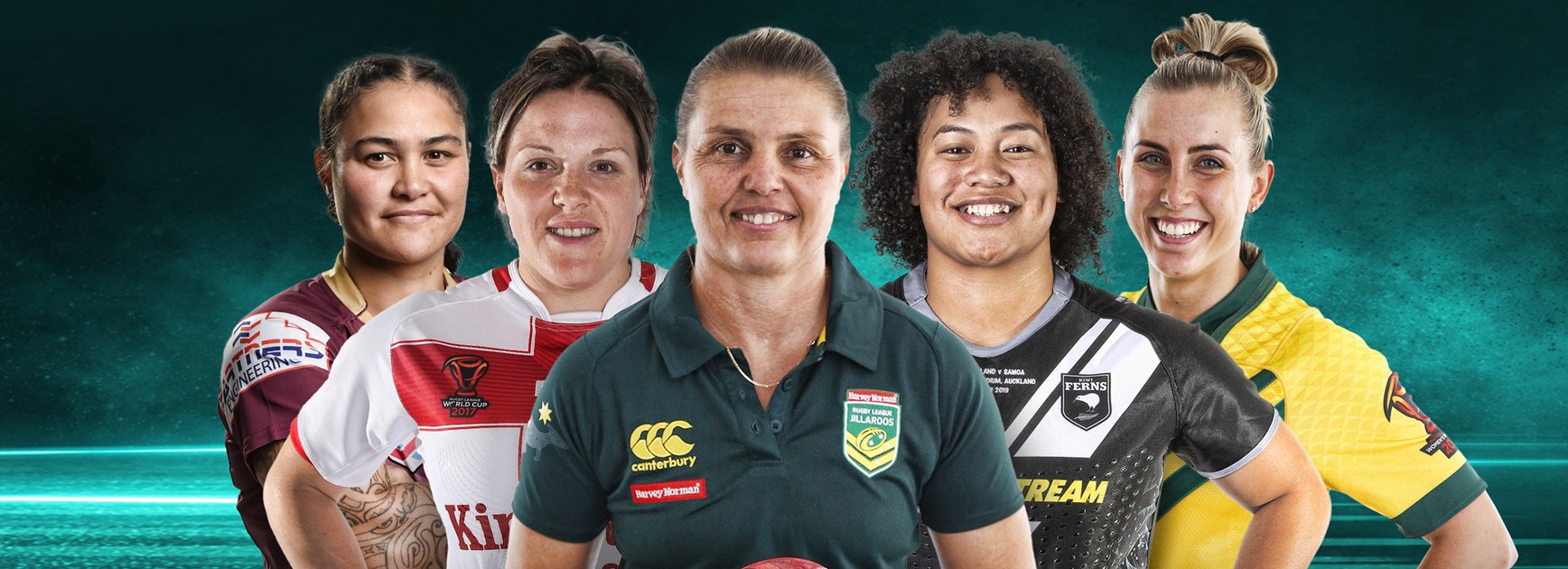
Australian players dominate the first women's Team of the Decade with Jillaroos chosen in more than half the spots in the premier squad of the 2010s.
NRL.com has compiled a women's Team of the Decade after input from key figures in the game including the likes of current Jillaroos coach Brad Donald, Channel Nine commentator Jo Barrett and Ladies Who League's Mary Konstantopoulos.
The list consists of 11 Australian internationals - highlighting their dominance over the past decade with two World Cup campaign victories, five Kiwi Ferns representatives and one England international.
The next decade of women's rugby league is set to be even bigger with the 2021 World Cup kicking off at least three major international events over the next 10 years.
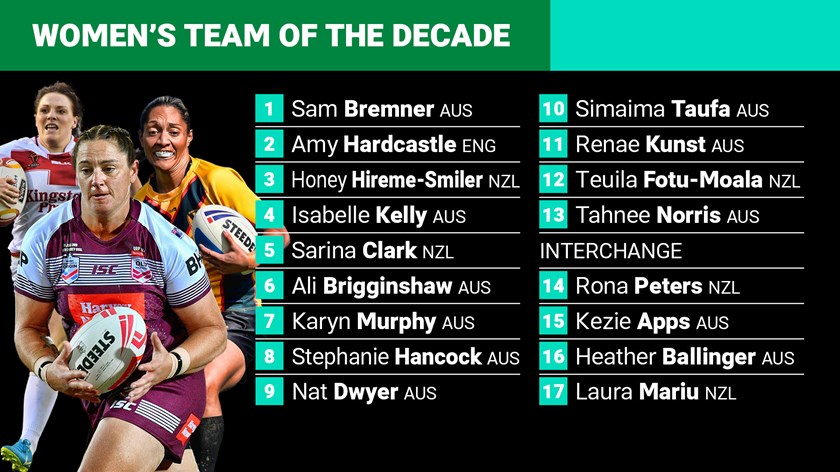
Team of the decade
Fullback
Contenders: Lindsay Anfield (England), Sam Bremner (Australia), Sarina Clark (New Zealand), Jodie Cunningham (England), Apii Nicholls (New Zealand)
Winner: Sam Bremner (Australia)
Australian outside back Sam Bremner edged New Zealand's Sarina Clark (nee Fiso) for the fullback spot. A dominant 2013 World Cup campaign on debut for the Jillaroos landed her in the team of the tournament. The 28-year-old has gone on to become one of the game's dominant players.
Bremner's recent seasons have been hampered by injuries. She also gave birth to her first child Reef in 2019, missing all of last year's women's calendar as a result.
Despite that, she remained at the top of most judges lists for the coveted No.1 jersey.

Wingers
Contenders: Chelsea Baker (Australia), Karina Brown (Australia), Sarina Clark (New Zealand), Amy Hardcastle (England), Hilda Mariu (New Zealand), Atawhai Tupaea (New Zealand)
Winners: Sarina Clark (New Zealand) and Amy Hardcastle (England)
Sarina Clark (nee Fiso) missed out on the fullback spot but was included on the wing given the selection dilemma around her dual battle with Bremner. Clark represented the Kiwi Ferns for more than a decade before falling pregnant prior to the 2017 World Cup.
Rated as one of the finest players in the women's game, Clark returned to play at the elite level for the Warriors in their 2018 NRLW campaign.
England's Amy Hardcastle nabbed the other wing spot after an impressive 10-year period that looks set to continue into the 2021 World Cup.
Despite being considered more of a centre, Hardcastle scored a treble against New Zealand at the 2013 World Cup to solidify herself as one of the more consistent finishers in the game. She was too good to leave out.
The best hits from the 2019 NRLW season
Centres
Contenders: Maitua Feterika (New Zealand), Natalie Gilmour (England), Honey Hireme-Smiler (New Zealand), Jenni-Sue Hoepper (Australia), Isabelle Kelly (Australia), Amelia Kuk (Papua New Guinea), Jessica Sergis (Australia).
Winners: Honey Hireme-Smiler (New Zealand) and Isabelle Kelly (Australia)
A dominant pair of centres chosen with Kiwi Ferns legend Honey Hireme-Smiler and Australia's Isabelle Kelly edging a number of other worthy candidates.
Hireme-Smiler, 38, remains one of the biggest names in women's rugby league with four World Cup campaigns under her belt and showing no signs of slowing down.
She was named player of the tournament in 2013 and went on to back up her efforts to lead the try-scorers list with 13 tries in four games at the 2017 event.
Kelly, who burst onto the scene in 2017, has enjoyed a stellar rise to the top in quick succession with her performances at the state and international level earning her the highest of accolades.
The 2018 Golden Boot winner was judged the world's best player after her two-try heroics in the 2017 World Cup final win over New Zealand.
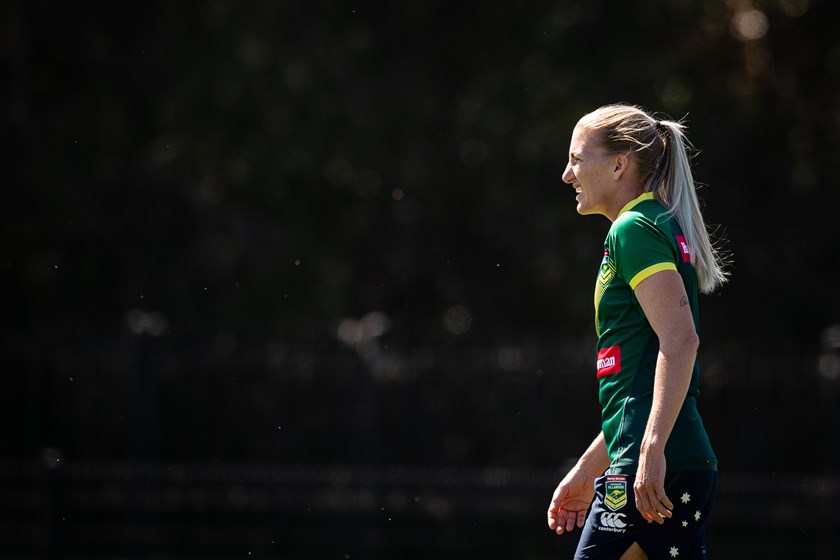
Halves
Contenders: Ali Brigginshaw (Australia), Jodie Cunningham (England) Georgia Hale (New Zealand), Laura Mariu (New Zealand), Karyn Murphy (Australia), Rona Peters (New Zealand).
Winners: Ali Brigginshaw (Australia) and Karyn Murphy (Australia)
Australian pair Ali Brigginshaw and Karyn Murphy are the halves. Both players enjoyed periods of dominance in green and gold.
Brigginshaw remains one of the game's best players and was well supported by Murphy up until her retirement in 2014.
Murphy was enormous as captain for the Jillaroos in their 2013 World Cup win, while Brigginshaw was judged best player on the paddock in the 2017 final against New Zealand.
Props
Contenders: Elsie Albert (Papua New Guinea), Heather Ballinger (Australia), Stephanie Hancock (Australia), Aieshaleigh Smalley (New Zealand), Simaima Taufa (Australia), Elianna Walton (Australia).
Winners: Stephanie Hancock (Australia) and Simaima Taufa (Australia)
Another pair of Australians lock up the front-row positions in a hotly contested field.
Brisbane Broncos prop Steph Hancock is almost an automatic choice after a dominant career in the middle.
Hancock made her Jillaroos debut in 2003 and played her 20th Test in 2018 against New Zealand.
She's joined by NSW prop Simaima Taufa, who made her Jillaroos debut in 2014 and went on to win the Dally M medal three years later. Taufa is rated one of the game's most consistent forwards.
The top NRLW tries from the 2019 season
Hooker
Contenders: Brittany Breayley (Australia), Nat Dwyer (Australia), Lois Forsell (England), Rona Peters (New Zealand), Krystal Rota (New Zealand)
Winner: Nat Dwyer (Australia)
A rich decade of talent in the hooking role with New Zealand's Krystal Rota providing consistency and Brittany Breayley claiming Dally M medal winner in 2018.
However, despite Nat Dwyer's career peak probably arriving in the previous decade, she was too hard to leave out.
Starting her career in the outside backs before moving to the No.9 jersey, the sharp and creative Dwyer was part of the victorious 2013 World Cup campaign before announcing her retirement.
The player of the under 18s State of Origin annual fixture wins the Nat Dwyer Medal.
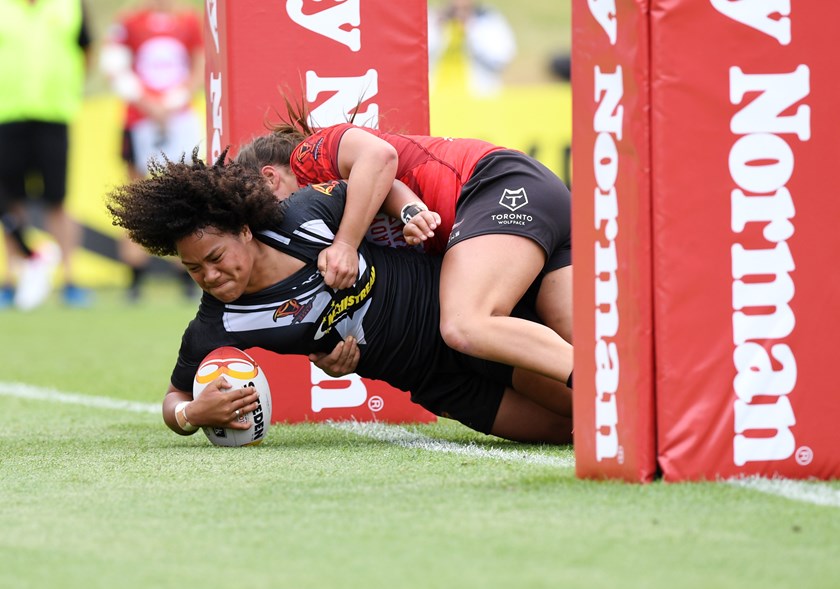
Second row
Contenders: Kezie Apps (Australia), Teuila Fotu-Moala (New Zealand), Renae Kunst (Australia), Emily Rudge (England), Ruan Sims (Australia), Kathleen Wharton (New Zealand).
Winners: Teuila Fotu-Moala (New Zealand) and Renae Kunst (Australia)
New Zealand powerhouse Teuila Fotu-Moala and retired Jillaroo Renae Kunst edge another field of strong contenders for positions in the second row.
Fotu-Moala, who was the first player suspended in the NRLW last season playing for St George Illawarra, has played in 14 Tests for the Kiwi Ferns and was part of the international side's that lost the World Cup finals to Australia in 2013 and 2017.
Fotu-Moala was named player of the 2017 World Cup ahead of the likes of Ali Brigginshaw and Honey Hireme-Smiler.
A strong edge runner, Kunst joins Fotu-Moala in the back row after a respectful career that included captaining the Jillaroos in 2008.
Kunst retired in 2017 following the Jillaroos' 23-16 win in the World Cup final.
Lock
Contenders: Georgia Hale (New Zealand), Laura Mariu (New Zealand), Tahnee Norris (Australia), Rona Peters (New Zealand)
Winner: Tahnee Norris (Australia)
Another case of perhaps the decade earlier having an impact here but there's no questioning Tahnee Norris's influence on the women's game. Norris, like Murphy and Dwyer, was coming towards the end of her career but played a huge role in the 2013 World Cup campaign.
In 2019, she was given the accolade of having the medal for player of the Australian National Championships named in her honour.
Interchange
Rona Peters (New Zealand)
Rated highly amongst peers and past coaches, Peters enjoyed a dominant 12-year career for the Kiwi Ferns before moving to Australia in 2016. She played the 2013 World Cup tournament in the halves before shifting to hooker.
A Brisbane Broncos player, Peters has settled in the forward pack and via a new eligibility rule can continue to represent Queensland in State of Origin.
What is a Jillaroo?
Kezie Apps (Australia)
NSW captain Kezie Apps went narrowly close to earning a starting spot with her inclusion on the bench well-deserved. Apps made her international debut with the Jillaroos in 2014 and went on to win the Dally M medal two seasons later.
Apps was among one of the best players in the 2017 World Cup final against New Zealand and continues to lead from the front at club and state level in Australia.
Laura Mariu (New Zealand)
Recently retired utility Laura Mariu earns a spot after a long career that spanned throughout the recent decade.
Mariu played in a record five World Cup campaigns for New Zealand between 2000 and 2018 before retiring at the end of the Warriors' NRLW season.
She finished her career in the halves after starting out in the pack.
Heather Ballinger (Australia)
Recently retired Australian forward Heather Ballinger rounds out the 17 after an illustrious career for Queensland and in the green and gold.
She made her Jillaroos debut in 2011 and was part of the side's World Cup campaigns in 2013 and 2017.
A no-nonsense forward, Ballinger is a member of the Federal Police away from the paddock.
Her combination with Hancock and Kunst in Queensland's line-up helped form a dominant period for the Maroons until recent times.
